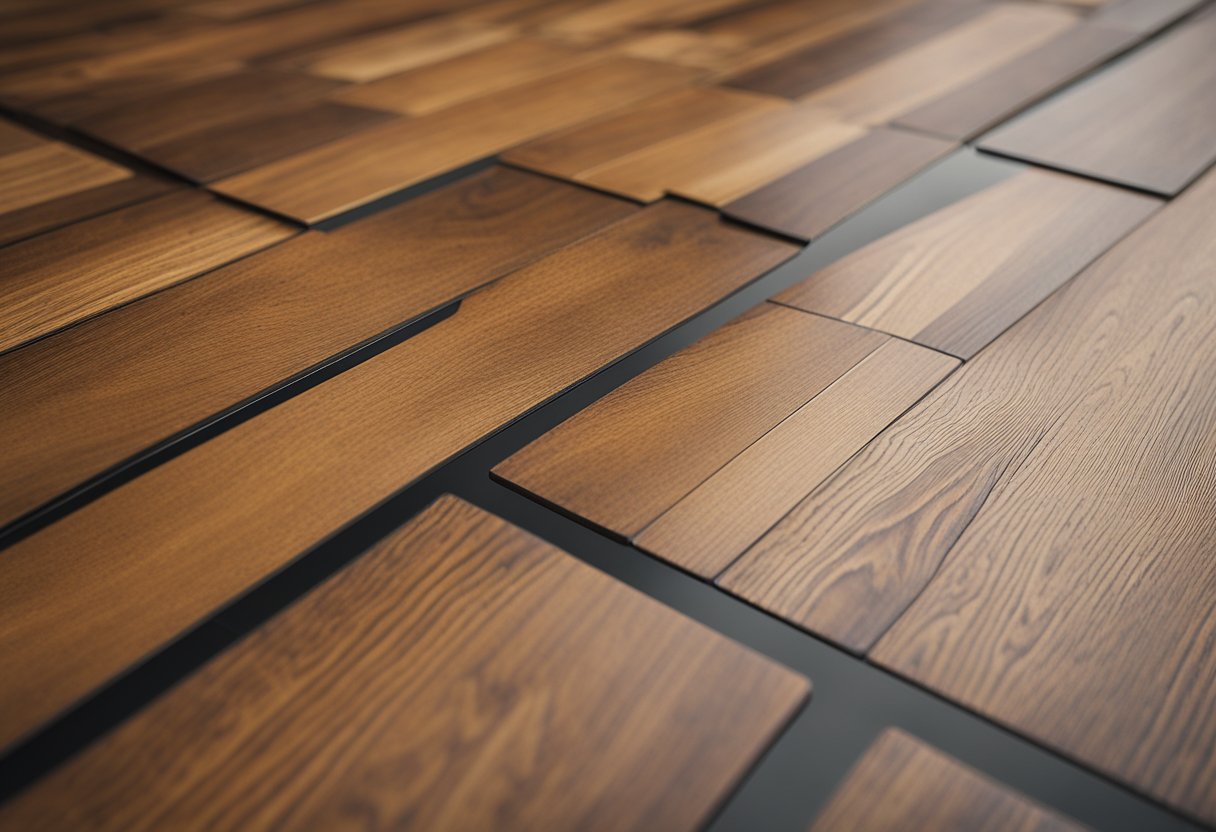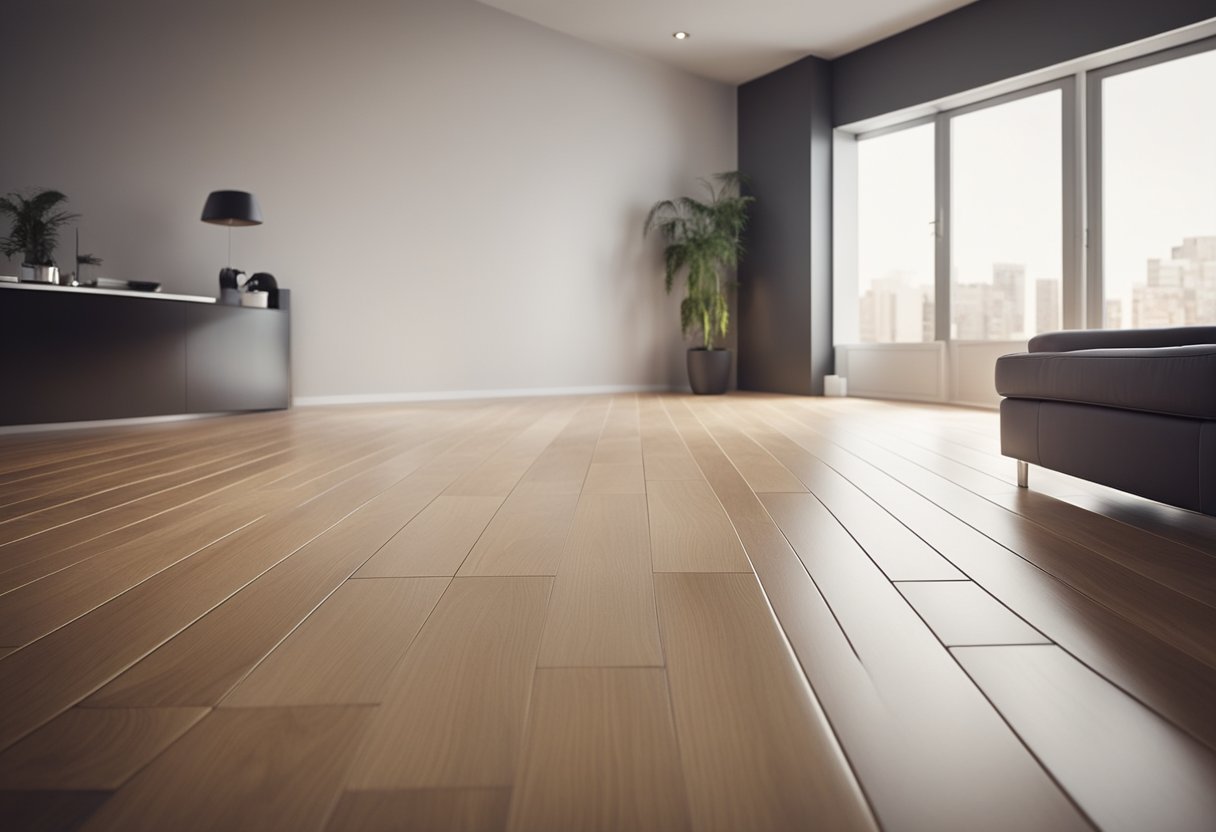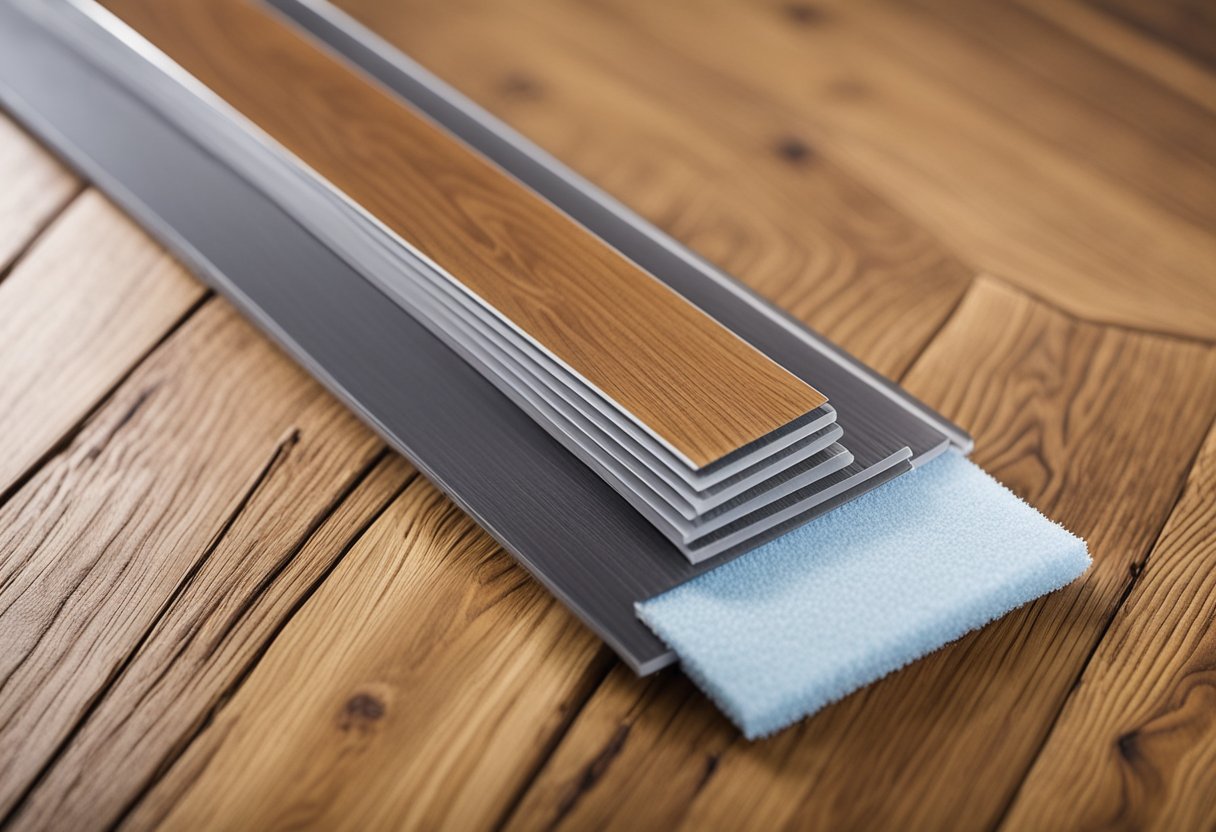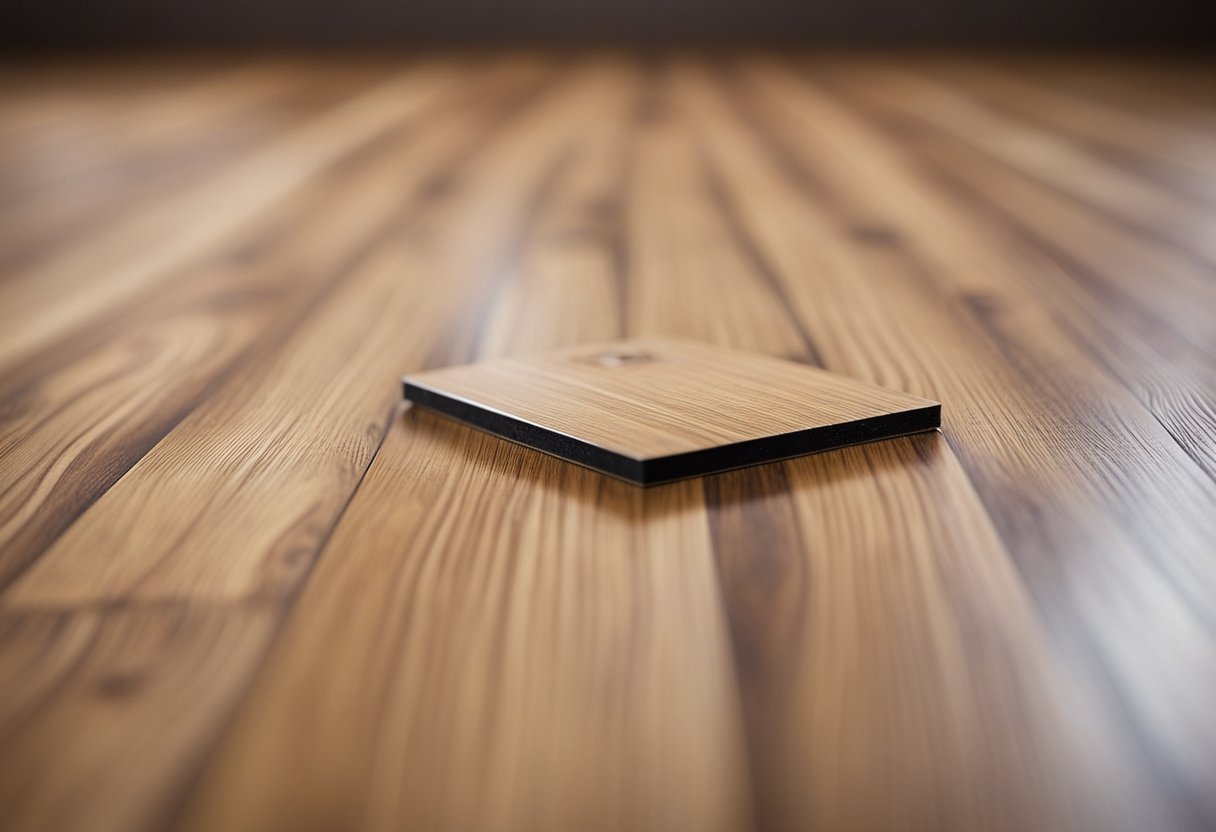Laminate flooring is a popular and affordable flooring option for homeowners. It is durable, easy to maintain, and comes in a wide variety of styles and colors. One of the most important factors to consider when choosing laminate flooring is the type of edge that it has.

There are two main types of edges in laminate flooring: beveled and square. Beveled edges have a slight groove or angle on the edges of each plank, while square edges have no groove and are flush with each other. Understanding the differences between these two edge types is important for choosing the right flooring for your home.
Key Takeaways
- Laminate flooring comes in two main edge types: beveled and square.
- Beveled edges have a slight groove or angle on the edges of each plank, while square edges are flush with each other.
- Choosing the right edge type for your laminate flooring depends on factors such as installation considerations and maintenance preferences.
Understanding Laminate Flooring Edges
Laminate flooring is a popular choice for homeowners due to its durability, affordability, and ease of installation. One of the defining characteristics of laminate flooring is its edges. Laminate flooring edges can be either beveled or square, and each type has its own unique advantages and disadvantages.
Beveled edges on laminate planks add a natural style reminiscent of hardwood floors to the flooring, giving it a more authentic wood look. Each edge is slightly rounded to give a V-groove between each plank. This helps to create a more realistic appearance, as it mimics the look of real hardwood flooring. Beveled edges also help to hide minor imperfections in the subfloor and make the planks appear more seamless.
On the other hand, square edges on laminate flooring are straight and do not have any grooves or bevels. This creates a more modern and streamlined look, making it a popular choice for contemporary and minimalist interiors. Square edges are also easier to clean and maintain, as dirt and debris do not get trapped in the grooves. However, square edges can make the flooring appear more artificial and less like real hardwood.
In conclusion, the choice between beveled and square edges ultimately comes down to personal preference and the overall design aesthetic of the room. Homeowners who prefer a more traditional and rustic look may prefer beveled edges, while those who prefer a more modern and streamlined look may prefer square edges. When choosing laminate flooring, it is important to consider the edges and how they will fit into the overall design of the room.
Beveled Edge Laminate Flooring
Characteristics of Beveled Edges
Beveled edge laminate flooring is characterized by a V-groove that runs along the edge of each plank, creating a small groove between each plank. This groove gives the flooring a more realistic wood look, as it mimics the natural separation between wood planks. The beveled edge can be either pressed or rolled, with the pressed beveled edge offering a more rustic, handscraped look and the rolled beveled edge creating a more subtle definition between planks.
Advantages of Beveled Edges
One advantage of beveled edge laminate flooring is that it can help mask minor imperfections in the subfloor, as the grooves make it less noticeable when the planks are not perfectly level. Additionally, the beveled edge can create a more visually interesting floor, as the grooves add depth and dimension to the surface. Finally, beveled edge laminate flooring can be easier to install, as the grooves allow for more flexibility in fitting the planks together.
Common Uses for Beveled Edge Flooring
Beveled edge laminate flooring is a popular choice for those who want to achieve a more natural wood look in their home, without the high cost of real hardwood. It can be used in a variety of settings, from traditional to contemporary, and is available in a wide range of colors and finishes. Beveled edge laminate flooring is often used in living rooms, bedrooms, and hallways, but can be used in any room of the home. It is also a popular choice for commercial settings, such as offices and retail spaces, as it is durable and easy to maintain.
Square Edge Laminate Flooring
Characteristics of Square Edges
Square edge laminate flooring is characterized by its straight edges that meet at a 90-degree angle. The planks fit together seamlessly, creating a uniform and smooth surface. This type of edge is ideal for a modern and sleek look, as it provides a clean and crisp appearance.
Advantages of Square Edges
One of the main advantages of square edge laminate flooring is that it creates a seamless and uniform look. This type of flooring is also easy to clean and maintain, as there are no grooves or bevels where dirt and debris can accumulate. Additionally, square edge laminate flooring is often more affordable than beveled edge options.
Common Uses for Square Edge Flooring
Square edge laminate flooring is a popular choice for modern and contemporary interiors. It is often used in high-traffic areas such as living rooms, hallways, and kitchens. This type of flooring is also suitable for commercial spaces such as offices and retail stores, as it provides a clean and professional look.
In summary, square edge laminate flooring is a popular choice for those looking for a modern and sleek look. Its straight edges provide a uniform and seamless appearance, while also being easy to clean and maintain. This type of flooring is often more affordable than beveled edge options and is commonly used in high-traffic areas and commercial spaces.
Installation Considerations for Laminate Flooring Edges

During the installation of laminate flooring, it is important to consider the type of edge you want to use. Beveled edges are a popular choice for their elegant appearance and ability to hide small imperfections in the subfloor. Square edges, on the other hand, offer a more modern and streamlined look.
When installing laminate flooring with beveled edges, it is important to leave a small gap between the metal rail and the edge of the flooring. This gap allows the flooring to expand and contract during temperature and humidity fluctuations, preventing buckling or warping. The top decorative piece of the transition strip will hide this gap, providing a seamless transition between rooms.
Square edge laminate flooring, on the other hand, requires a completely flat subfloor to achieve a smooth and even surface. Any irregularities in the subfloor will be visible, highlighting imperfections rather than hiding them. It is important to use a leveling compound or other subfloor preparation methods to ensure a flat and even surface.
In summary, when choosing between beveled and square edges for laminate flooring, it is important to consider the overall style and look you want to achieve, as well as the condition of your subfloor. Beveled edges offer a more traditional and forgiving look, while square edges provide a modern and sleek appearance. Regardless of the edge type, proper installation is crucial to ensure a durable and long-lasting floor.
Maintenance and Care for Different Edge Types

When it comes to maintenance and care for laminate flooring, the type of edge can make a difference. Square edges offer a seamless look that is easy to clean. However, beveled edges can accumulate dust and dirt, which can lead to damage over time. It is important to regularly clean beveled edges to prevent debris buildup.
One way to clean beveled edges is to use a soft-bristled brush to sweep the grooves. Another option is to use a vacuum cleaner with a brush attachment. It is important to avoid using water or harsh chemicals on beveled edges, as this can cause damage to the flooring.
Square edges, on the other hand, are easier to clean and maintain. They do not accumulate dirt and debris as easily as beveled edges, making them a good choice for high-traffic areas or homes with pets. Regular sweeping and occasional mopping with a damp mop is all that is needed to keep square edges looking their best.
In summary, while both beveled and square edges have their advantages, it is important to consider maintenance and care when choosing the right edge type for your laminate flooring. Square edges are easier to clean and maintain, while beveled edges require more attention to prevent damage from debris buildup.
Frequently Asked Questions

What are the visual distinctions between beveled and square edge laminate flooring?
Beveled edge laminate flooring has a groove between the planks that gives it a more distinct and realistic appearance. Square edge laminate flooring, on the other hand, has a flat edge that creates a seamless and uniform look.
How does the edge type affect the installation process of laminate flooring?
The edge type of laminate flooring can affect the installation process. Beveled edge laminate flooring requires more precision during installation to ensure that the grooves align correctly. Square edge laminate flooring, on the other hand, has a more forgiving installation process since the edges are flat.
Can the type of edge on laminate flooring influence cleaning and maintenance requirements?
The type of edge on laminate flooring can influence cleaning and maintenance requirements. Beveled edge laminate flooring has grooves that can trap dirt and debris, requiring more effort to clean. Square edge laminate flooring, on the other hand, has a flat edge that is easier to clean.
What impact does beveled versus square edge have on the durability of laminate flooring?
The choice between beveled and square edge laminate flooring does not have a significant impact on durability. Both types of laminate flooring are durable and can withstand normal wear and tear.
Are there specific settings or design aesthetics where beveled edge is preferred over square edge?
Beveled edge laminate flooring is typically preferred in settings where a more realistic and natural look is desired, such as rustic or traditional design aesthetics. Square edge laminate flooring is preferred in modern and contemporary design aesthetics where a sleek and uniform look is desired.
How does the choice between micro bevel and square edge affect the overall feel of a room?
The choice between micro bevel and square edge can affect the overall feel of a room. Micro bevel laminate flooring has a subtle groove that creates depth and texture, adding warmth and character to a room. Square edge laminate flooring has a clean and uniform look that can make a room feel more spacious and modern.
Last Words
Choosing between beveled and square edges in laminate flooring boils down to your style and practical needs.
Beveled edges offer a classic, detailed look with a forgiving nature for subfloor imperfections, while square edges provide a sleek, modern appearance that’s easy to maintain.
Whatever your choice, it’s a step towards customizing your space to perfectly match your vision and lifestyle.
Let’s make those floors a statement of your personal style!